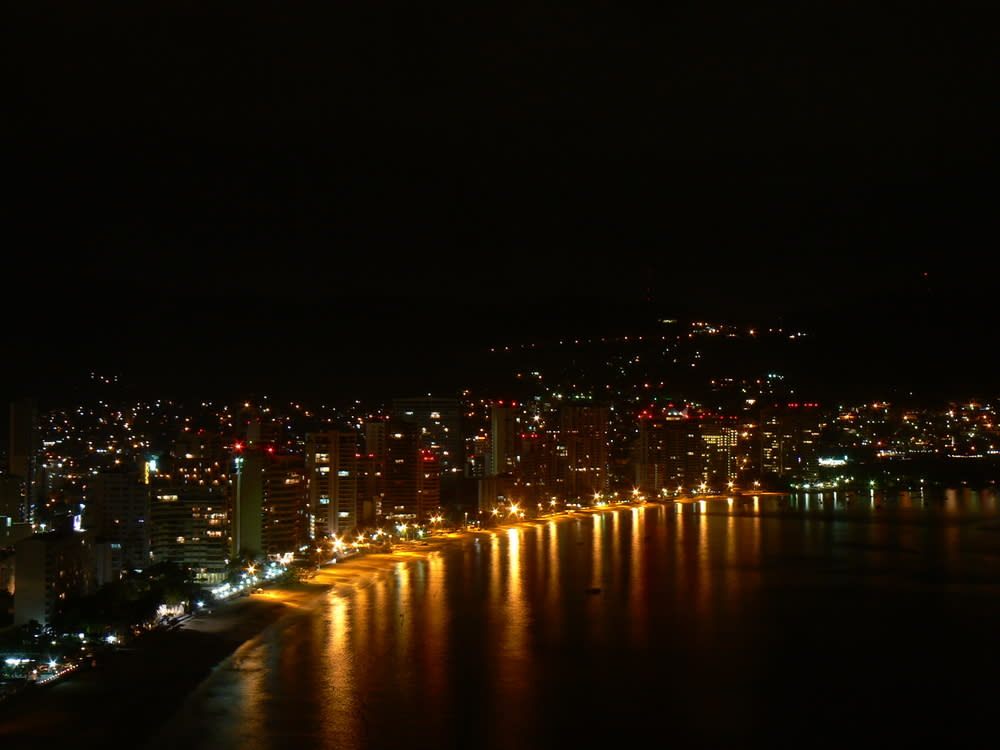More from Acapulco
Main Menu
- 00:00
- 06:00
- 12:00
- 18:00
- 23:00
Acapulco : Next 24-Hour Weather
Tomorrow - 28th December 2025
Sunrise 07:07
Sunset 18:15
Tomorrow - 29th December 2025
Sunrise 07:07
Sunset 18:15
Holiday Weather Now
Sorted by popularity:
Updated at 00:00 GMT
-
Temp feels like33°C92°F
-
Length of day11h 08m
-
Pressure29" (1009 hpa)
-
Visibility11 km (6miles)
-
Wind speed8 km/h
Sunrise 07:07
Sunset 18:15
-
Temp feels like:
33ºC (92 ºF)
-
Length of day:
11h 08m
-
Pressure:
29" (1009 hpa)
-
Visibility:
6 miles (11 km)
-
Wind speed:
8 km/h
The tourist resort city of Acapulco is situated on the southwest Pacific coast of Mexico, around 300km south of the countryâs capital Mexico City. The city is situated on a deep, semi-circular bay and is an important shipping port and popular stop for cruise liners.
The first tourist hotel was built in the 1930s and since then Acapulco has become a booming tourist destination. Over the last few decades Acapulco has been fighting with Cancun to be Mexicoâs number one holiday resort. The climate has played a major part in this.
The climate of Acapulco is tropical. Temperatures are always hot and fluctuate little over the year; the coolest period in January and February sees an average of 26°C while July, the hottest month, averages 29°C. Even in January daily lows are above 20°C. It feels particularly hot in July just before the rains hit. Daily highs at this time are 33°C on average.
There arenât 4 distinct seasons like we have in Europe; the year is divided into a dry season and a wet season.
The main event of the climactic year in Acapulco is the wet season from August to October. This is when almost all of the yearly rainfall occurs. August and September are the wettest months with over 300mm of rain, although the rains can come as early as June some years and stay until early November.
There is a chance of tropical storms and sometimes hurricanes hitting Acapulco at this time of year so the city is a good deal quieter â" this can make it more appealing to some, as well as being a cheaper time to visit. However, the risk of hurricanes should not be taken lightly and every trip should be preceded by a check on hurricane activity. Much of the rain falls at night and is generally restricted to short torrential downpours so there is still a healthy amount of sunshine.
The risk of hurricanes can keep the city in a state of tension for these few months but in truth large hurricanes are quite rare. The last sizeable one was hurricane John in 2006, but citizens still remember the devastating effects of hurricane Pauline in 1997. High winds and torrential rains are common, especially if a hurricane threatens or passes nearby.
The rest of the year in Acapulco has almost no rainfall and is known as the dry season. Blue skies and high temperatures are guaranteed and this is what has led to Acapulcoâs fame as a beach holiday destination.
January through to March is arguably the best time to visit as it is the coolest period of the year with average temperatures around 26°C. This makes it a little more comfortable, especially for those on active holidays. Daily highs average in the low 30s and night time temperatures drop to a pleasant 21°C on average.

















